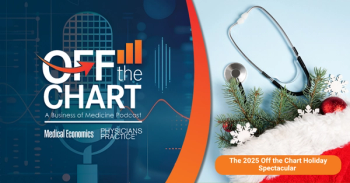
Adopting targeted point-of-care messaging in primary care
As the primary care market grows, physicians must present treatment information when patients are making critical health decisions.
In the rapidly evolving landscape of health care in the United States, the need for
The importance of POC messaging in primary care
As the POC messaging enables delivery of relevant health information to primary care providers at the exact moment they are making critical health decisions for the patient receiving the treatment, the approach leverages the immediacy and relevance of health care settings to deliver tailored messages that resonate with the provider’s prescribing patterns as well as the patient’s medical history to positively influence treatment decisions.
In the context of primary care, where providers manage a broad spectrum of health issues and interact with diverse patient populations, targeted POC messaging can be a game changer with its speciality in empowering health care providers (HCPs) to share personalized information about preventive measures, treatment options, medication adherence, eligible financial assistance programs and lifestyle changes directly to patients in real time. This relevance in timing and nature of the message delivered prevents information overload for HCPs and enhances their interactions with patients, ultimately improving treatment adherence.
For better understanding, let us explore how key stakeholders in health care can maximize the effectiveness of POC messaging in primary care, both enriching HCP-patient interactions and enhancing brand loyalty among HCPs.
Enriching HCP-patient interactions
1. Alleviating the strain on time-constrained HCPs
2. Improving health outcomes through precision marketing
As the U.S. health care system is increasingly data-driven and the adoption of targeted POC messaging in primary care aligns with the broader trend toward precision marketing in health care, analyzing primary care provider data, including demographics, medical expertise, prescribing patterns and patient-led data including medical history, is imperative in creating and delivering highly specific messages that address the unique needs of individual patients. For instance, a primary care provider serving a population with a high prevalence of diabetes can utilize targeted POC messaging to share information about diabetes management programs and inform their patients about new treatment options and provide reminders for routine screenings and tests. This level of precision not only enhances the effectiveness of the messaging but also contributes to better health outcomes by ensuring that patients receive the right information at the right time.
3. Inducing health care affordability
With only 15% copay utilization rate observed among commercial brand prescription fills and 42% HCPs expressing lack of awareness about eligible financial assistance programs, many patients remain unaware of available financial aid, indicating a significant awareness gap among patients and HCPs.By leveraging HCP and patient-led data in a regulatory complaint manner, HCPs can be delivered hypertargeted messages about the eligible financial assistance programs for individual patients in real time, enhancing treatment adherence and reducing the rising health care costs tremendously.
4. Challenges and considerations
While the benefits of targeted POC messaging in primary care are clear, is it equally imperative to address certain challenges for successful implementation of this technology. By maintaining patient privacy and confidentiality while extracting relevant patient data, HCPs and marketers must ensure that messaging is utilized and delivered in a Health Insurance Portability and Accountability Act–compliant manner.
Furthermore, implementation of a robust technology-powered infrastructure to support targeted POC messaging demands that primary care providers invest in integrated electronic health record (EHR) systems, patient communication platforms, and analytics tools that can capture and utilize patient data effectively. While many claim to have the expertise in understanding the intricacies of POC messaging, it is imperative to collaborate with certified marketing partners known for providing quality engagement with HCPs over generating superficial ad impressions.
The way forward
As the founder and global CEO of
Newsletter
Stay informed and empowered with Medical Economics enewsletter, delivering expert insights, financial strategies, practice management tips and technology trends — tailored for today’s physicians.








